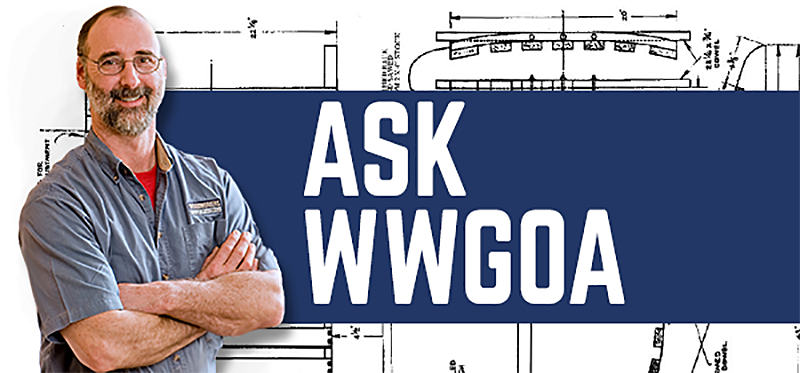Question:
I recently hung two good sized wall cabinets in my garage. I used French cleats for each and they were affixed to brick veneer in the garage. I used Tapco hardware, including the supplied masonry bit. I wore out the bit and both arms, but I hung the cabinets. The next project is six sets of functional exterior board and batten shutters which, guess what, require eight bores per window into the same brick to affix the four pintles. Looking at four dozen bores, what don’t I know about drilling into masonry? Should I use a drill, as I have done on the previous project, or an impact driver? Should I run fast or slow? Should I lubricate the bore? Is blasting required?
Submitted by anonymous
Answer:
Blasting would make things go faster, but the resulting hole might be too big for the fastener you’re using. I think the missing ingredient is a hammer….more specifically a hammer drill. Hammer drills put a forward impact on the bit, as opposed to the rotary impact that comes from an impact driver. When drilling into masonry they make a HUGE difference in speed and ease of drilling. In fact if you don’t use a hammer drill it’s pretty easy to prematurely wear out the carbide tip of a drill bit. Hammer drills should only be used with carbide-tipped bits, and on masonry. Hammer drills generally have a high and low range for rpm. On small bits (I’m guessing you’re drilling around 3/16”) I’d use the high range. Don’t forget hearing protection.
George
Do you have a question for WWGOA? Ask us on Facebook or email editor@wwgoa.com. Note: questions may be edited for clarity and relevance.


Definitely use a hammer drill. A non-hammer drill tends to let the bit bounce around in the hole. It can cause the hole to be larger in diameter, so the fastener won't work as well..
Thanks for the info. Probably a stupid question but need to hang a holder/mount for my flag. No spot to display that does not involve masonry. Questions are 1: Depending on where I place I have the option to drill into brig vs the mortar. Preference/pros/cons either way? 2. Some time back I purchased a larger flag like you might see at firehouse. It is not very heavy. Pole is hollow but are there any rough rules of thumb how much weight/stress you can on holder on a brick wall? Thanks so much!!
Although using a hammer drill is important, there are some other things to consider when drilling into masonry. A lot of heat is generated so, if you're intending to drill large holes, or the material is very hard, use a smaller drill to pilot and them the finish size. This will take more time but will reduce the effort required (on both you and the tool). Also, masonry drilling produces a lot of dust. If this is left in the hole, the drill bit starts to 'ride' on a film of dust rather than cutting the material. This will heat the bit up very quickly which can (in extreme circumstances) cause the brazing at the tip to fail. Therefore, remember to frequently withdraw the bit to clear debris. Even better is to use a hole vacuum. I recently purchased the Festool BHC Drilling Dust Nozzle (other manufacturers make similar items). This has revolutionised my drilling. It withdraws the dust as I drill (which keeps the bits much cooler), keeps the drill bit clean (the flutes don't clog) and almost zero clean up afterwards. Finally, unless you're using a SDS or SDS plus drill system, always refrain from whacking the drill on full speed, a little slower extends the life of the drill and bit.
A hammer drill makes a big difference. In brick, it'll drill holes (using the proper masonry bits) about as fast and easy as drilling into wood. Concrete drilling is a bit slower, but still quite easy. I have a Milwaukee 18v hammer drill, btw, but nearly every manufacturer has one in their lineup.